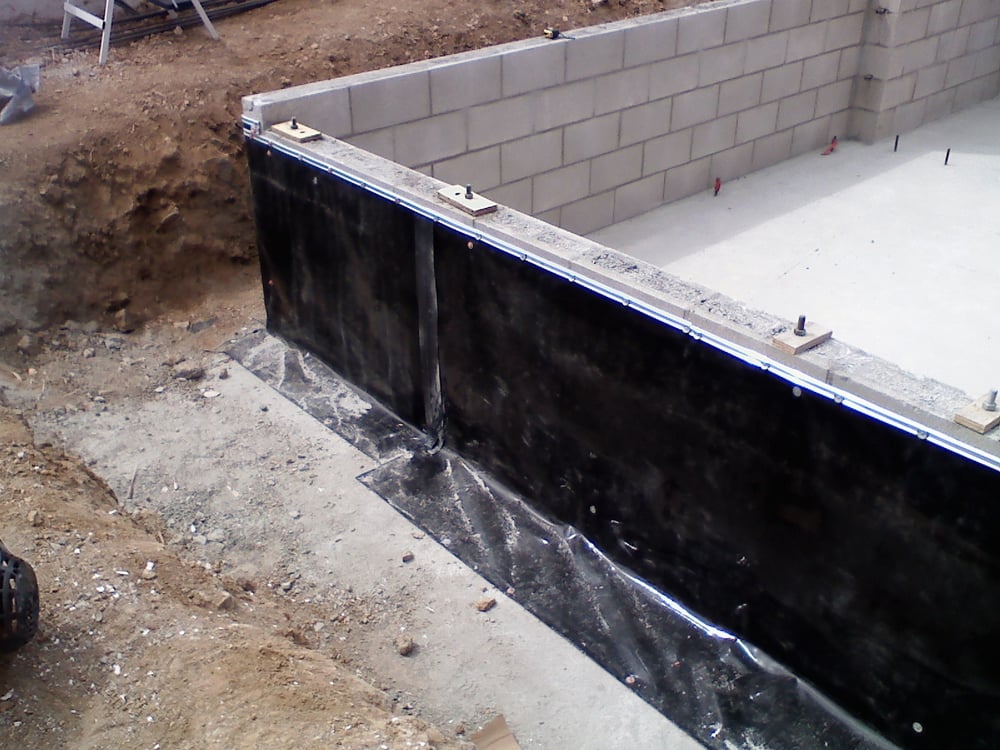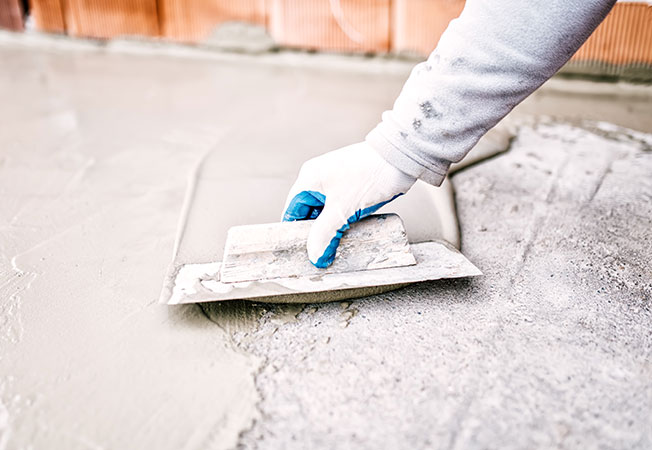How Waterproofing Functions: A Comprehensive Check Out Techniques and Technologies
Waterproofing is necessary for safeguarding structures from moisture-related damages. It includes different strategies and innovations that create barriers versus water intrusion. Conventional approaches, such as compressed clay, coexist with modern developments like liquid-applied membranes. Comprehending the subtleties of these methods is vital for efficient application. The performance of any kind of waterproofing option hinges not just on the strategies made use of yet also on continuous maintenance and examination. What are the vital aspects that influence lasting performance?
Recognizing the Fundamentals of Waterproofing
Waterproofing is a vital process that protects frameworks from water invasion, which can bring about considerable damages over time. This method includes the application of various products and techniques created to produce an obstacle against wetness. The key goal is to prevent water from permeating surface areas, which can trigger degeneration, mold growth, and structural instability.Various factors influence the choice of waterproofing technique, including the type of framework, its place, and environmental problems. Comprehending the physics of water motion and the residential or commercial properties of various products is important in choosing an efficient waterproofing solution.Effective waterproofing not just safeguards structures yet likewise enhances their durability and integrity. Usually, it is incorporated into the design stage of building and construction to guarantee complete security. As awareness of water-related issues expands, the significance of understanding waterproofing basics comes to be significantly clear to engineers, home builders, and homeowner alike.
Typical Waterproofing Methods
Traditional waterproofing approaches have been utilized for centuries, counting on tried and true strategies and products to guard frameworks from water damages. Among the oldest methods entails the usage of clay, which, when compressed, develops a natural barrier against dampness. Additionally, asphalt, a sticky, black product stemmed from petroleum, has been used for its water-resistant residential properties, typically put on roofs and foundations.Another strategy involves the application of lime-based plasters, which provide a breathable layer that enables wetness to run away while protecting against water ingress. Thatch roofing, a traditional technique still seen in some societies, uses excellent waterproofing due to its securely packed straw layers.Moreover, making use of rock and block has been popular, as these products are inherently resistant to water when effectively set up. Generally, standard waterproofing techniques emphasize the significance of picking proper materials and building techniques to boost sturdiness against water breach.
Modern Waterproofing Technologies
Developments in modern-day waterproofing modern technologies have actually reinvented the method frameworks are secured from water damages. Innovative approaches such as liquid-applied membranes and advanced sealants have improved the effectiveness and versatility of waterproofing services. These modern technologies permit for smooth application, lowering the danger of leaks and making certain detailed insurance coverage over complex surfaces.Moreover, the assimilation of smart modern technologies, such as dampness sensors and automated tracking systems, allows real-time analysis of waterproofing performance. This aggressive method assists in timely upkeep and reduces lasting repair service costs.Additionally, improvements in spray-applied layers offer fast application and superb bond, adapting to numerous substratums while giving robust protection. Strategies like polymer-modified systems further improve versatility and toughness, making them suitable for varied environments. In general, modern-day waterproofing modern technologies not only alleviate water breach however also add to the longevity and sustainability of structures, marking a significant change in the sector.
Materials Used in Waterproofing
The performance of waterproofing remedies heavily depends on the materials made use of in their application. Different materials are utilized to develop barriers against water ingress, each with special residential or commercial properties suited for various atmospheres. Commonly utilized materials consist of membrane layers, coatings, and sealants.Liquid-applied membranes, commonly made from polyurethane or acrylic, create a seamless barrier that adapts to intricate surfaces. Sheet membranes, commonly constructed from rubber or polycarbonate, offer toughness and are suitable for bigger locations. Furthermore, cementitious waterproofing materials, made up of cementitious substances, provide superb adhesion and flexibility.Sealants made from silicone or polyurethane are necessary for joints and seams, making sure comprehensive defense. Advanced products, such as geo-composite membranes, combine several features, enhancing performance. In general, the selection of waterproofing products is important in achieving lasting and reliable water resistance, tailored to details project needs and ecological conditions.
Typical Applications of Waterproofing
Waterproofing plays an essential function in different fields, making certain the longevity and stability of structures. Usual applications include residential remedies that shield homes, commercial facilities that safeguards companies, and commercial setups that require you could check here robust security versus moisture. Recognizing these applications highlights the relevance of waterproofing in keeping both security and performance throughout various settings.
Residential Waterproofing Solutions
Lots of homeowners encounter obstacles with wetness intrusion, making effective residential waterproofing services crucial. Different techniques exist to resolve this issue, including exterior and interior waterproofing systems. Inside remedies often entail the application of sealers and coatings to cellar wall surfaces, which aid stop water infiltration. Exterior methods generally include the installation of water drainage systems and water-proof membranes that divert water far from the foundation.Additionally, property owners may consider sump pumps to eliminate water accumulation and dehumidifiers to regulate humidity degrees. Proper grading and making use of rain gutters additionally play an important duty in managing water flow around the home. By best shower waterproofing executing these strategies, home owners can substantially minimize the danger of water damage and mold development, guaranteeing a dry and risk-free living environment.

Commercial Framework Security
Effective waterproofing remedies play a vital duty in the defense of business facilities. Yard drainage Omaha. These methods are vital for securing buildings, car park frameworks, and bridges from water damages, which can compromise architectural integrity and result in expensive repair work. Common applications consist of the installation of membrane layers, layers, and sealers that create barriers against wetness infiltration. Areas such as basements, roofing systems, and outside walls are typically focused on to assure durability and toughness. In addition, waterproofing systems can boost power effectiveness by avoiding water-related problems that may lead to mold growth and damage. By applying robust waterproofing procedures, homeowner can shield their investments and maintain operational performance, eventually adding to the general sustainability of business centers
Industrial Applications Introduction
While various fields encounter one-of-a-kind challenges, the demand for dependable waterproofing services stays a continuous in industrial applications. Industries such as production, construction, and energy frequently come across atmospheres where moisture direct exposure can threaten architectural honesty and functional performance. In making facilities, waterproofing is vital for safeguarding machinery and products from water damages. In building and construction, it safeguards structures and cellars against groundwater infiltration. The power market depends on waterproofing for the protection of devices in hydroelectric plants and overseas frameworks. Additionally, food handling sectors use waterproofing to ensure hygiene and compliance with security requirements. In general, effective waterproofing solutions are essential for boosting durability, safety, and productivity throughout numerous industrial setups.
Maintenance and Long Life of Waterproofing Solutions
Waterproofing options are created to use long-term protection against dampness why not look here breach, routine upkeep is important to assure their effectiveness and longevity. Regular evaluations play a considerable duty in recognizing prospective problems such as cracks, peeling, or indicators of water damages. Addressing these problems immediately can prevent further degeneration and costly repairs.Additionally, cleaning the surface area of waterproof areas aids remove dirt and particles that can endanger the integrity of the waterproofing barrier. It's likewise a good idea to reapply protective finishings or sealers as advised by manufacturers to maintain perfect performance. Environmental aspects, such as UV direct exposure and extreme weather conditions, can affect the lifespan of waterproofing materials, making regular analysis important
Frequently Asked Concerns
Can Waterproofing Be Applied in Winter?
The inquiry of using waterproofing in winter raises worries regarding bond and healing. Several items might not execute at their ideal in reduced temperature levels, necessitating careful selection and consideration of particular guidelines for efficient application.
The Length Of Time Does Waterproofing Usually Last?
The period of waterproofing efficiency varies based upon products and environmental factors. Typically, it can last from 5 to 10 years, however regular upkeep and inspections are necessary to guarantee peak performance and durability.
Is DIY Waterproofing Effective and Safe?
The effectiveness and safety and security of DIY waterproofing depend upon various aspects, including worldly high quality and application technique. While some individuals achieve satisfying results, others may encounter issues that endanger lasting security and structural stability.
What Are the Signs of Failing Waterproofing?
Indicators of stopping working waterproofing consist of visible water discolorations, peeling paint, mold and mildew growth, stuffy odors, and wetness in wall surfaces or ceilings - Foundation waterproofing Omaha. These signs suggest jeopardized barriers, demanding prompt examination and prospective remediation to stop more damage
Just how Do I Choose the Right Waterproofing Specialist?
